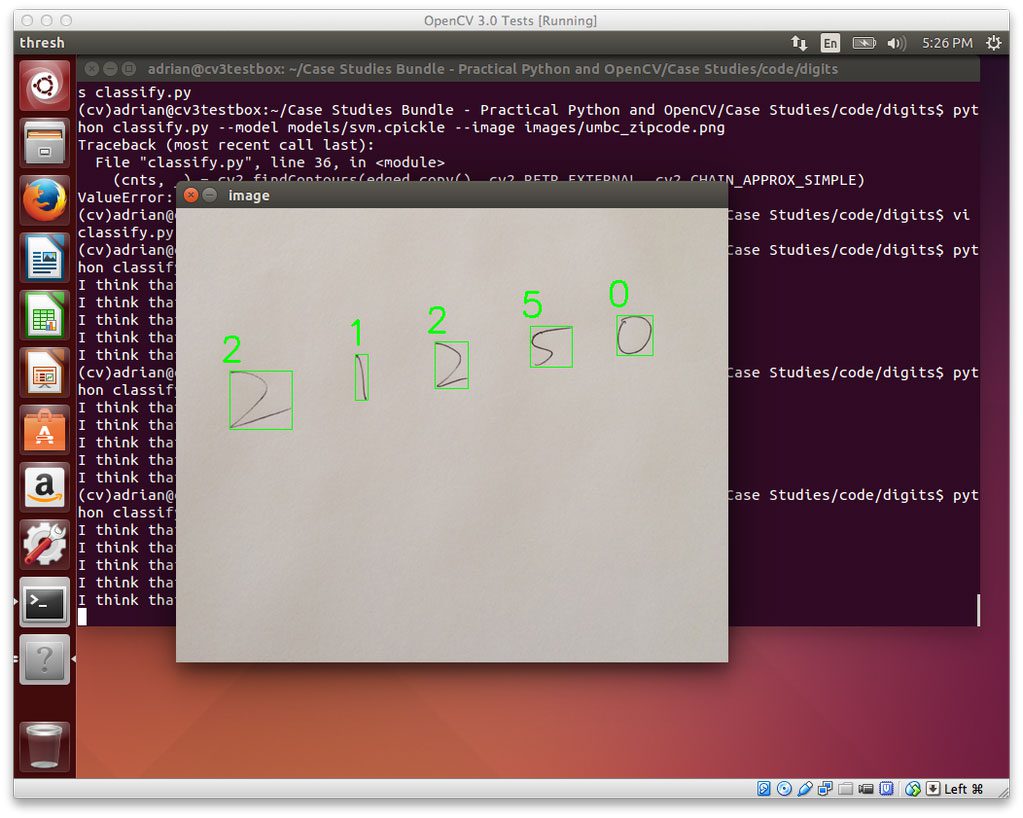How To Install Python3 On Ubuntu
Insight: Install Python 3.6 on Ubuntu 16.04/Ubuntu 16.10/ 17.04. Python is one of the mostly used high-level programming language. It was created by Guido van Rossum. First version of python was released in 1991. For both Ubuntu and Debian, we have ongoing project goals to make Python 3 the default, preferred Python version in the distros. This means: Python 3 will be the only Python version installed by default. Python 3 will be the only Python version in any installation media (i.e. Image ISOs) Only Python 3 will be allowed on the Ubuntu touch images. How to install Python 3.6.1 in Ubuntu 16.04. Python 3.6.1 is now the latest maintenance release of Python 3.6 and supersedes 3.6.0. Python is a widely used high-level programming language for general-purpose programming. To install Python 3.6 from sources in all major Linux distributions, check out this guide: How to Install Latest Python 3.6 Version in Linux Install Python 3.6 in Ubuntu 14.04 and 16.04 By default, Ubuntu 14.04 and 16.04 ship in with Python 2.7 and Python 3.5.
- How To Install Python 3 On Ubuntu Live Cd
- How To Install Python 3 On Ubuntu Download
- How To Install Python 3 On Ubuntu Forums
- How To Install Python 3 On Ubuntu Mate
- How To Install Python On Ubuntu Visual Studio
- Ubuntu Install Python 3.6
- How To Install Python In Ubuntu
- How To Install Python 3 On Ubuntu 17.04
- How to install Python 3.6.1 in Ubuntu 16.04. Python 3.6.1 is now the latest maintenance release of Python 3.6 and supersedes 3.6.0. Python is a widely used high-level programming language for general-purpose programming. Python 3.6 series comes with new syntax features, such as.
- On Ubuntu 16.10 and 17.04, you can find Python 3.6 package in the Universe repository and easily install it via apt as shown. $ sudo apt update $ sudo apt install python3.6 To view a list of all Python binaries installed on your system, run the following ls command.
- To install Python 3.6 from sources in all major Linux distributions, check out this guide: How to Install Latest Python 3.6 Version in Linux Install Python 3.6 in Ubuntu 14.04 and 16.04 By default, Ubuntu 14.04 and 16.04 ship in with Python 2.7 and Python 3.5.
I have both python2.7 and python3.2 installed in Ubuntu 12.04.
The symbolic link python links to python2.7.

When I type:
It will default install python2 version of package-name.
Some package supports both python2 and python3.
How to install python3 version of package-name via pip?
 kev
kev16 Answers
You may want to build a virtualenv of python3, then install packages of python3 after activating the virtualenv. So your system won't be messed up :)
This could be something like:
Felix YanFelix YanUbuntu 12.10+ and Fedora 13+ have a package called python3-pip which will install pip-3.2 (or pip-3.3, pip-3.4 or pip3 for newer versions) without needing this jumping through hoops.
I came across this and fixed this without needing the likes of wget or virtualenvs (assuming Ubuntu 12.04):
- Install package
python3-setuptools: runsudo aptitude install python3-setuptools, this will give you the commandeasy_install3. - Install pip using Python 3's setuptools: run
sudo easy_install3 pip, this will give you the commandpip-3.2like kev's solution. - Install your PyPI packages: run
sudo pip-3.2 install <package>(installing python packages into your base system requires root, of course). - …
- Profit!
Source: Shashank Bharadwaj's comment
The short answer applies only on newer systems. On some versions of Ubuntu the command is pip-3.2:
If it doesn't work, this method should work for any Linux distro and supported version:
If you don't have curl, use wget. If you don't have sudo, switch to root. If pip3 symlink does not exists, check for something like pip-3.X
Much python packages require also the dev package, so install it too:
Sources:
python installing packages with pip
Pip latest install
Check also Tobu's answer if you want an even more upgraded version of Python.
I want to add that using a virtual environment is usually the preferred way to develop a python application, so @felixyan answer is probably the best in an ideal world. But if you really want to install that package globally, or if need to test / use it frequently without activating a virtual environment, I suppose installing it as a global package is the way to go.
Marco SullaMarco SullaWell, on ubuntu 13.10/14.04, things are a little different.
Install
Install packages
NOT pip-3.3 install
The easiest way to install latest pip2/pip3 and corresponding packages:
Note: please run these commands as root
I had the same problem while trying to install pylab, and I have found this link
So what I have done to install pylab within Python 3 is:
It has worked properly, and as you can see in the link you can do this for every Python version you have, so I guess this solves your problem.
lmiguelvargasflmiguelvargasfOld question, but none of the answers satisfies me. One of my systems is running Ubuntu 12.04 LTS and for some reason there's no package python3-pip or python-pip for Python 3. So here is what I've done (all commands were executed as root):
Install
setuptoolsfor Python3 in case you haven't.• This means 10% of your posts/comments can serve as self promotion.
 • • In order to link to your own website/channel/blog, you maintain a ratio of 9 non-promotional post for each one that does serve promotional purposes.
• • In order to link to your own website/channel/blog, you maintain a ratio of 9 non-promotional post for each one that does serve promotional purposes.or
With Python 2.4+ you can invoke
easy_installwith specific Python version by usingpython -m easy_install. Sopipfor Python 3 could be installed by:That's it, you got
pipfor Python 3. Now just invokepipwith the specific version of Python to install package for Python 3. For example, with Python 3.2 installed on my system, I used:
If you have pip installed in both pythons, and both are in your path, just use:
References:
This is a duplicate of question #2812520
If your system has python2 as default, use below command to install packages to python3
$ python3 -m pip install <package-name>
Easy enough:
How To Install Python 3 On Ubuntu Live Cd
If you want Python 3.3, which isn't the default as of Ubuntu 12.10:
TobuHow To Install Python 3 On Ubuntu Download
TobuYou can alternatively just run pip3 install packagename instead of pip,
How To Install Python 3 On Ubuntu Forums
Clonedvd crack. Firstly, you need to install pip for the Python 3 installation that you want. Then you run that pip to install packages for that Python version.
Since you have both pip and python 3 in /usr/bin, I assume they are both installed with a package manager of some sort. That package manager should also have a Python 3 pip. That's the one you should install.
Felix' recommendation of virtualenv is a good one. If you are only testing, or you are doing development, then you shouldn't install the package in the system python. Using virtualenv, or even building your own Pythons for development, is better in those cases.
But if you actually do want to install this package in the system python, installing pip for Python 3 is the way to go.
How To Install Python 3 On Ubuntu Mate
Lennart RegebroLennart RegebroAlthough the question relates to Ubuntu, let me contribute by saying that I'm on Mac and my python command defaults to Python 2.7.5. I have Python 3 as well, accessible via python3, so knowing the pip package origin, I just downloaded it and issued sudo python3 setup.py install against it and, surely enough, only Python 3 has now this module inside its site packages. Hope this helps a wandering Mac-stranger.
Execute the pip binary directly.
First locate the version of PIP you want.
Then execute.
You should install ALL dependencies:
sudo apt-get install build-essential python3-dev python3-setuptools python3-numpy python3-scipy libatlas-dev libatlas3gf-baseInstall pip3(if you have installed, please look step 3):
sudo apt-get install python3-pipIinstall scikit-learn by pip3
pip3 install -U scikit-learnOpen your terminal and entry python3 environment, type
import sklearnto check it.
Gook Luck!
Manish KothariAnother way to install python3 is using wget. Below are the steps for installation.
Also,one can create an alias for the same using
How To Install Python On Ubuntu Visual Studio
Now open a new terminal and type py and press Enter.
arpiagar